Mark Amery – 9 June, 2012
The brief here is broad and simple - five moving image works that use a moving image camera in a fixed point of view. It's a modest show in size and with no one work like the other. Three works suggest how it could have been more focused: a strong thread emerging as to how the video camera is extending documentary photography.
Still is the first of four 2012 exhibitions curated by Jenny Gillam and Eugene Hansen as part of the Film Archive’s Wellington Curator at Large programme. The last year have seen the gallery space host various shows, but it’s lacked a sustained curated programme since Mark Williams left at the end of 2010. Gillam and Hansen have promoted their programme under the name of Show, the excellent artist-run space they ran in Wellington between 2004 and 2006, though on the basis of this moving image group exhibition it’s hard to see any substantial connection other than their partnership.
The brief here is broad and simple - five moving image works that use a moving image camera in a fixed point of view. I was initially disappointed that the show didn’t particularly lead me to think about the significance of fixing a video camera’s view. Yet it’s a modest show in size and with no one work like the other. Three works suggest how it could have been more focused: a strong thread emerging as to how the video camera is extending documentary photography.
Murray Hewitt has been working with fixed position moving image for some time. With Recessional he faithfully documents 61 New Zealand Wars battle sites, be they marked by a memorial or a field of waving grass. Filmed straight on, he takes a documentary photographer’s dispassionate distance but then takes a few steps even further back (contrast this to the closeness often of Laurence Aberhart’s camera to such sites). He is often forced to film across ditches and roads. These are memorials forgotten as we rush by, their forecourts/foregrounds bisected by highways taking us some place else.
In effect Hewitt creates a positive from a double negative: passion for our past by taking a dispassionate unnostalgic position in relation to something we already treat dispassionately. The sites are placed in context, their emptiness given attention and presence. Hewitt leaves us the quiet open space to consider our relationship to this history and how we should treat it.
This is good work but it suffers for being presented on a small screen, rather than projected large in its own space.
The other strong work here is Marie Shannon’s What I am Looking At, a richly rewarding, moving piece that also deserves its own space.
In a rolling piece of text down the screen - aptly, like the end credits of a movie - Shannon describes the many and varied items she must do something with in the studio of her deceased partner Julian Dashper. It is both a logistical and emotional stocktake. Sometimes she elaborates on what she knows about what she sees, at other times what she doesn’t know. Throughout she openly wrestles with the determination of what is significant. With the work of such a wide-ranging conceptually based? artist it is difficult to determine what items are works in progress and what simply junk. There is also the open-ended question of what the significance now and to who of what was significant to one person then.
What we read on screen is read out in a dispassionate fluid monotone by Shannon, as if she may need the stablility of following an autocue. That Dashper is not named (he is referred to simply as ‘the artist’), whilst at the same time Shannon often lists things she sees in detail, adds to a beautiful tension in this work: the complex dance between the subjective and objective in documentary and archival work.
The small detail captured by the eye of a photographer is translated into words (gallery names, the shapes of things) but in also lapsing into what the person recorder is thinking and musing on he limits of what they know and don’t know, Shannon’s piece highlights the limits of the camera in being able to consider the context of what the picture frame contains (as if this was the only camera work Shannon could make at such a difficult time - an ‘I will need words’ period).
The work also highlights the emotional instability of any narrative. While itself a form of cataloguing of what is left, it is the unsettled and inconsistent subjective nature of the narration in ‘What I am Looking At’ which is fascinating and poetic.
The work is a form of autobiography. In the middle of listing things Shannon suddenly comments: “While I am making order in the studio, I am treading water at home.” In the midst of another section she recounts (with no clear segue way into it) an incident of someone causing damage to the studio door. Then another of someone driving past her house at night screaming ‘Fuck you, you fucking bitch’. Whether these actual incidents are connected to the deceased or Shannon we are not told. Shifting outside the world of the studio they act like emotional vents within the narrative.
It is this tension between order and disorder in the narrative - itself a reflection of what Shannon sees around her - that makes this such a strong work. Like a catalogue, all these comments are given the same measured emotional black and white weight. She ends her list with: “I am looking at the last drawing on the back of an envelope that contained an invoice from Homestead Picture Framers, postmarked 2nd of July 2009. There are four outlined cross shapes. The one at the top right has an arrow shape. The one at the bottom right is bubble shaped. To the right of the crosses are three ellipses…” The work is not only an elegant elegy, it is an engaging exploration of the boundaries of the documentary.
John Lake is best known as a stills photographer. His exploration of the potential of documentary as a political form within a gallery context has seen him start using moving image (a welcome pick up of Darcy Lange’s legacy).
There’s an interesting switch here. With the stills camera Lake’s series have explored different physical and thematic viewpoints of the same subject, and different ways to construct narrative. The camera moved around its subject. Here it is the film camera that stays still.
Here with The Talley Ban Song I find the results interesting but ultimately disappointing. Lake focuses on a small group of locked out Ngaruawahia freezing workers and their families in the Talleys’ Industrial dispute.
On a left hand screen the group stand behind a large Meat Union Aotearoa banner in union t-shirts singing a local take on ‘The Banana Boat Song, ‘The Talley-Ban Song’: “Come Mr Talley-man, why you lock the door for/ Daylight come and we’re gonna yell more!” Traditionally this has always been a workers song, where the lyrics are changed by the singers as it is sung.
On the right screen the group are interviewed. Yet while we hear the song sung on the left, with lyric sheets even provided in the gallery (emphasising the creativity of the workers’ adaptation), the interview on the right has been muted. We see the interviewees questions as subtitles but don’t hear the responses. I interpret this as giving creative voice to the workers, whilst at the same time commenting on how their real commentary in the dispute through the media has been silenced.
Whether or not this is the intention, I’m ultimately frustrated by not being able to hear the words of these people. Their concerns are reduced to chants. At the same time I like how the work makes me consider how art often does silence or at least stiffen its subjects, rather than give them voice. Perhaps this is something Lake is actively wrestling with and exploring.
These three works have an interesting relationship but this is watered down by the last two. In Daniel Von Sturmer’s The Cinema Complex (Sequence 6), cards of diminishing sized squares and different primary colours slowly appear in focus and then fade on the edge of a table top that rotates them into view, like an early moving image experiment. Perhaps it’s the context but I find this work elegant but dull.
Lastly Melissa Irving’s Being-here sees a dancer explore the limits of the three dimensional container the camera provides her within the Film Archive foyer space we walked through to enter the exhibition. With windows onto busy Taranaki Street beyond with its traffic and pedestrians she is trapped in a goldfish bowl of sorts and proceeds in an act of improvisation to both casually walk and dance in the space. I find the whole piece awkward, lacking the movement language of dance film or Sriwhana Spong’s similar space-marking piece in the recent Prospect survey. It doesn’t challenge my conceptions of space or place.
Mark Amery
Recent Comments
Jenny Gillam
The artist's decision - but probably a practical one.
Mark Amery
Good to have that clarified. I didn't notice the headphones - perhaps because The Talley Man Song didn't have them. ...
Jenny Gillam
Hi Mark, thanks for the review. I thought it was worth pointing out that there was a set of headphones ...
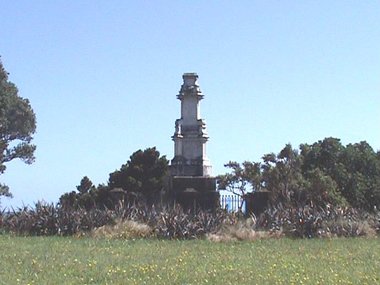
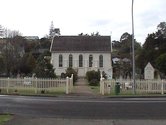
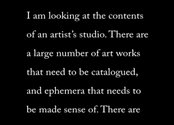


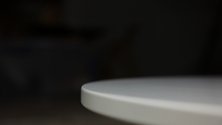
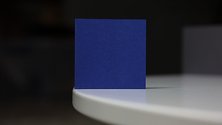
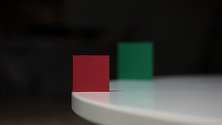
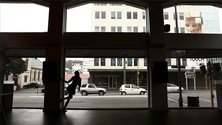
 Advertising in this column
Advertising in this column Two Rooms presents a program of residencies and projects
Two Rooms presents a program of residencies and projects



This Discussion has 3 comments.
Comment
Jenny Gillam, 1:56 p.m. 10 June, 2012 #
Hi Mark, thanks for the review. I thought it was worth pointing out that there was a set of headphones for the interviews in John Lake's work. Jenny
Mark Amery, 2:36 p.m. 10 June, 2012 #
Good to have that clarified. I didn't notice the headphones - perhaps because The Talley Man Song didn't have them. Naturally I still find it interesting that its the song we hear and not the interview, whether that was just a practical technical choice or an artistic one.
Jenny Gillam, 3:19 p.m. 10 June, 2012 #
The artist's decision - but probably a practical one.
Participate
Register to Participate.
Sign in
Sign in to an existing account.